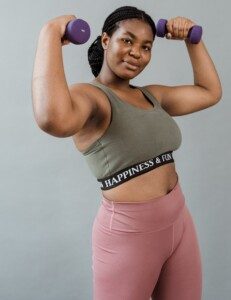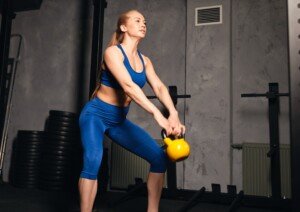
Did you recently have a baby, have resumed your exercise routine, but are now experiencing frightening PVCs?
A PVC is a premature ventricular contraction that makes it feel as though your heart is either skipping a beat or adding an extra beat in between beats.
In a PVC, the heart’s ventricles contract earlier than usual.
PVCs are often felt as a fluttering or pounding in the chest.
They can occur in people with or without heart disease and are usually benign, especially if infrequent.
But what about new-onset PVCs during exercise, after a pregnancy?
Cause of PVCs During Exercise Soon After Giving Birth
“The PVCs and women getting back in exercise after having a baby may reflect hormone changes,” says cardiologist David N. Smith, MD, a board certified cardiologist with Premier Cardiovascular Care and Wellness in SC.
“There is some evidence that suggests fluctuations in estrogen may alter the heart’s underlying rhythms; however, the fluid shifts that occur after delivery as well as the relative deconditioning may better explain premature ventricular contractions.”
For optimal health and fitness, a woman should make exercise a part of her life; there’s never a perfect time to begin a fitness regimen. Just do it.
Don’t wait till you lose weight to work out, and that includes strength training.
A lean body is NOT a requirement for pressing dumbbells and lifting kettlebells, nor is it a requirement for doing aerobic activities.

PexelsMart Production
Consult with your OBGYN for exercise guidelines during the postpartum period.
But keep in mind that pregnant women can exercise, but should be guided by their OBGYN.
Housework and taking care of babies and kids should never count as exercise — whether a woman is expecting or not.
One reason for this is because housework and caring for babies often come with a component of stress and/or anxiety.
Furthermore, housework and caring for babies comes with favoring the less dominant side of the body.
This can cause muscle imbalances and strained muscles.
But structured, methodical exercise can easily be done equally to both sides of the body, and this bilateral nature helps reset or prevent any imbalances from non-structured physical activity.
Exercise should be done with focus, good form and proper breathing.
For example, kettlebell swings will do so much more for the human body than will pushing a vacuum cleaner, and won’t come with the stress of “Oh, this dirty house!”

Shutterstock/The Faces
Greater fitness can mean a stronger, more efficient heart, which can reduce the frequency and impact of premature ventricular contractions.
Regular exercise strengthens the heart muscle and improves overall cardiovascular health, which can help blunt worries about irregular heartbeats.
Even if you’ve recently given birth, maintaining a fitness routine — once cleared by your physician — can support heart health and potentially lessen the occurrence of PVCs.


























